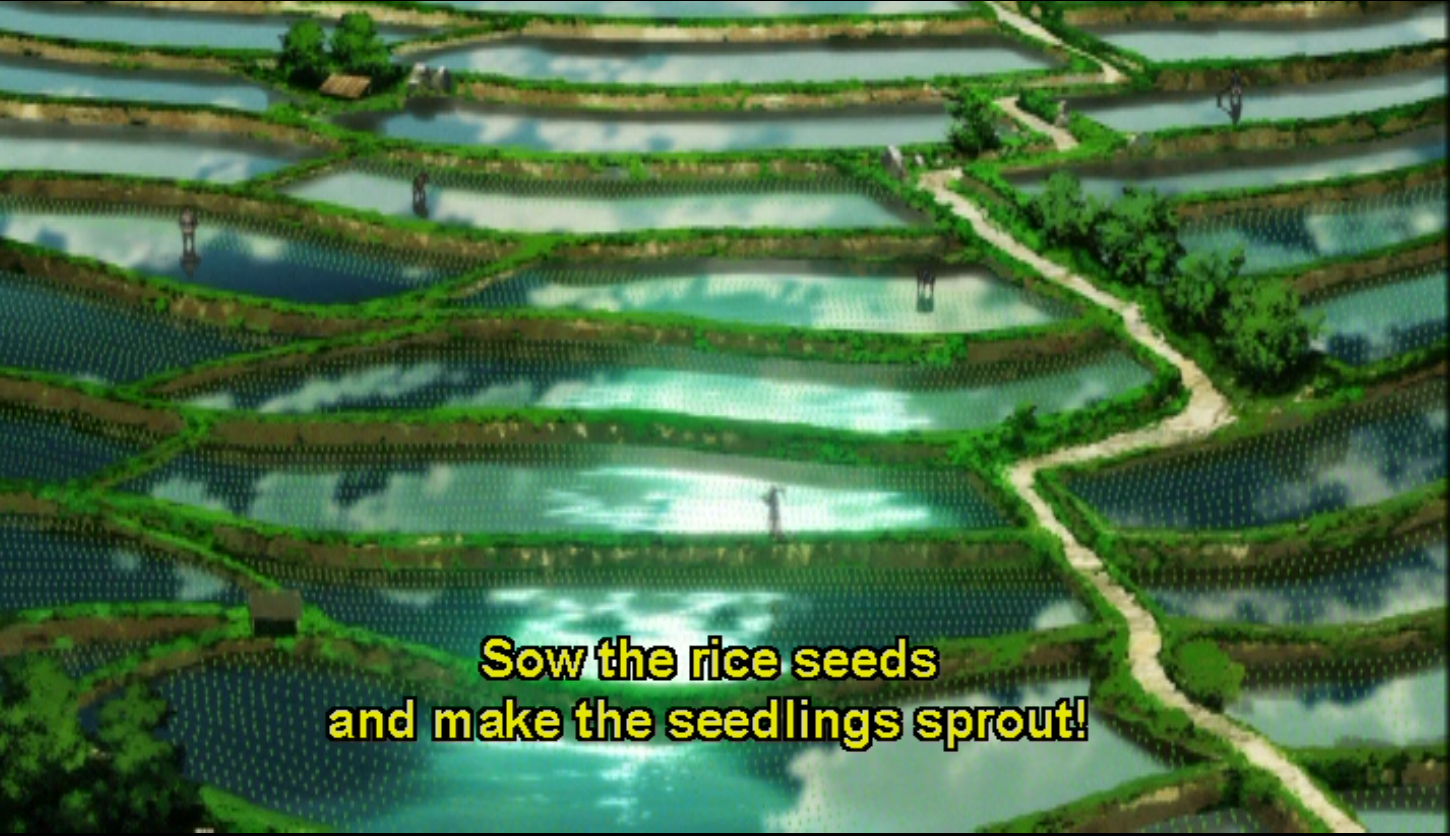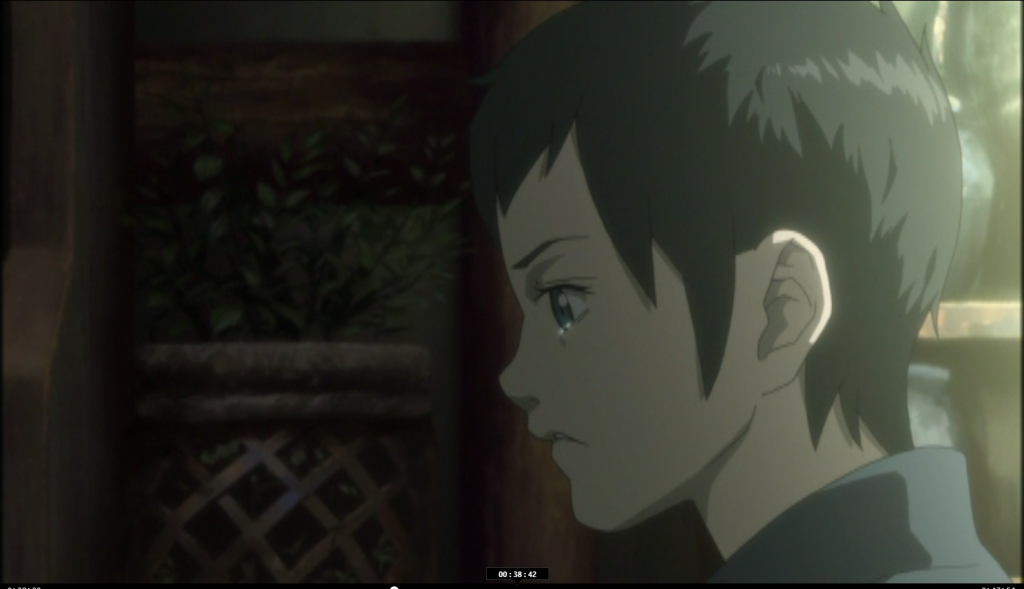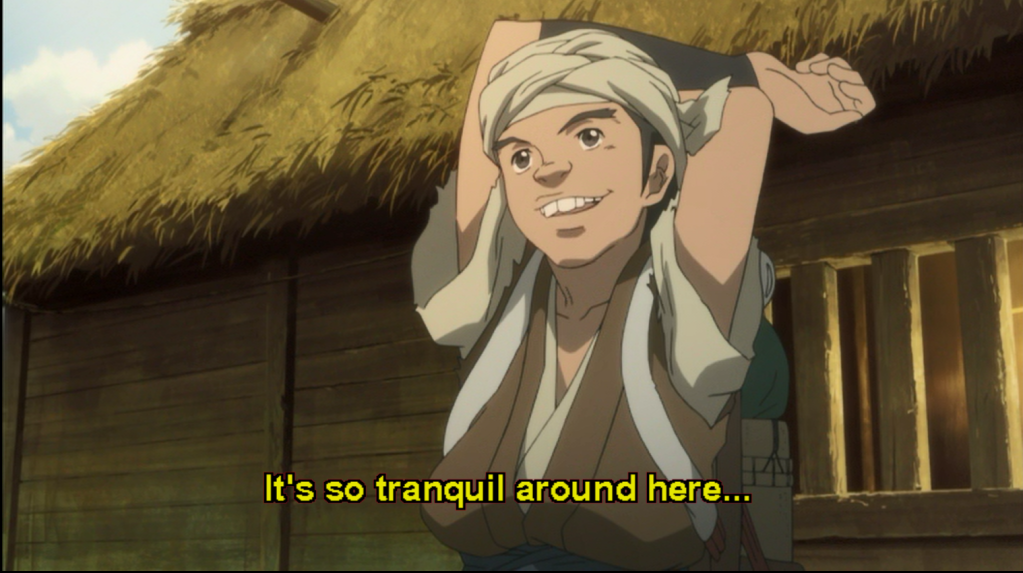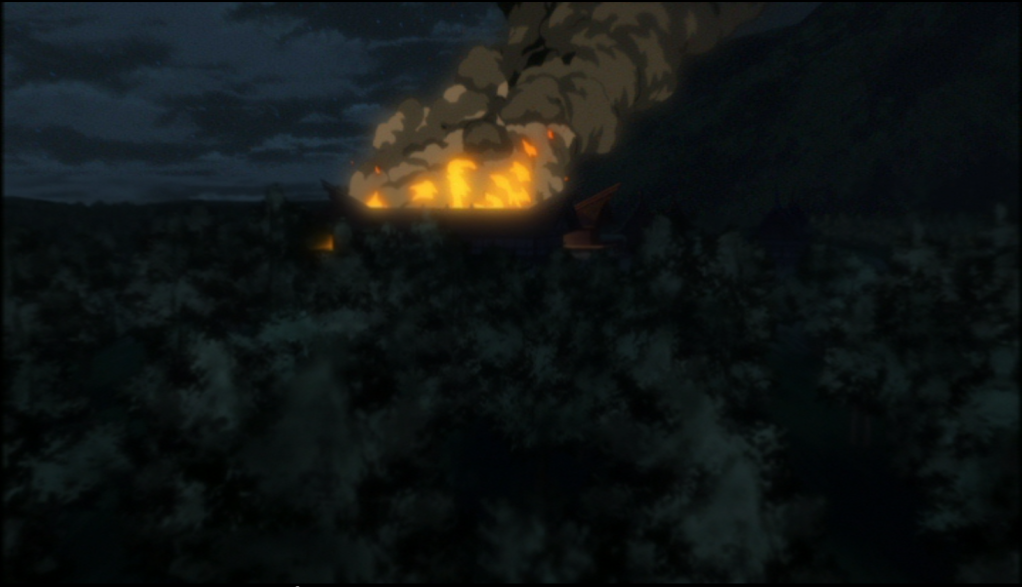
Hello, all you fine folks out there in the Otakusphere. After a long break, it’s once again time for me to take an anime from the list recommended to me as I go In Search of… my next favorite anime.
So what is this feature? Well, people have been regularly submitting anime for me to watch. Most of them are shows I haven’t seen. Some are shows that I just forgot to include on my MAL account. Either way, I watch them and say what I think. If you want to submit a title, you can do that on this Google Form.
This time we’re going In Search of… Moribito: Guardian of the Spirit.

This recommendation comes from Ashley Capes over at The Review Heap. At least that is what I remember. He didn’t actually write down who was submitting it. But according to my notes, it was from someone from Australia who has been watching anime since the mid-90s. Of course, that puts him right in my time frame. Though I’ve found people in other countries have different frames of reference for the anime they watched as a child. For me, it was a bunch of localized Go Nagai cartoons along with Star Blazers and Robotech. He watched Astro Boy. That is crazy.
Anyway, let’s move on.
Before I start introducing Moribito, I have to make a confession. I’ve seen this show before. In fact, I watched the old fansubs of this show back in the dark ages when that was the easiest way to watch seasonal anime. By that, it’s pretty clear that this show did not enter my pantheon of favorite shows of all time.
That said, it had been more than a decade since I’ve watched it, so while this experience wasn’t new, it was refreshing to revisit a story I had largely forgotten.
So what is Moribito: Guardian of the Spirit. It’s is a 2006 26-episode adaptation of the first book in a series by Nahoko Uehashi. The series has 12 books in total, and according to this wiki, they all focus on the story of Balsa, a spear-wielding bodyguard, and Chagum, the prince of the country of Yogo.
It’s hard to gauge how true that is because, unfortunately, only the first two books were ever released in English. I’m also not sure if this is a series of light novels or normal novels.

More notably, this adaptation was headed by Kenji Kamiyama, just after he finished up GitS: SAC 2nd GIG and just before he started on Eden of the East. The general consensus is that this was at the height of Kamiyama’s ability.
Talking about other blasts from the past, it was produced by Production I.G. when they were starting to get into computer-assisted animation. I’m going to touch on these two things in a bit.
Why did Ashley recommend this show to me?
“A fav from a few years back – some folks find it slow, but I enjoyed the focus on character, which I think you’d enjoy. There’s still action and intrigue, of course, but despite some flaws in the latter half (I reckon), it’s pretty good action/historical/fantasy etc.”
In addition, he noted that the focus on the characters in this show is what makes it memorable. Well, that and the fact that the main heroine uses a spear, which is not a traditional fantasy weapon.
So let’s talk about Moribito.
Is this really a Kenji Kamiyama show?
I will be honest. I’m a fan of both Standalone Complex and Eden of the East, and while I’m not as much of a fan of 2nd GIG, I can appreciate what it’s doing.
When I noticed that this show was not only directed by Kamiyama but also written by him, I was shocked. Moribito is not what I expect from Kamiyama.
In his other efforts, he explores social structures and how people can shift society, whether through intention or by accident. In Standalone Complex, he’s talking about how people share information and what the impact is on other people when they are immersed in a constant stream of data. In Eden of the East, he talks about how people can rebuild the connections that have been lost in society. (At least that is my memory of it.)

Moribito is not that. In fact, while the story’s climax could affect everything in this world, it’s almost an afterthought.
(Note: Small, relatively inconsequential spoilers ahead.)
Ashley is right. Moribito is a small story about two people. Chagum, the second prince of Yogo, the guardian of a spirit that needs to be reborn every 100 years, and Balsa, the bodyguard paid to protect him.
Now, a cast of characters around these two helps fill in the story. Shuga, a young astrologer with the royal court, is trying to figure out what is going on. Balsa’s friends, Tanda, Touya and Saya, are trying to help her and Chagum survive. Then there is the wise woman Torigai who is also trying to figure out what is going on.
But the story is focused on Chagum and Balsa and the parent/child bond they form throughout the story. It’s hard for me to draw any more significant themes out of this story. This is not exploring societal issues through metaphors. It’s not thinly veiled commentary. As far as I can tell, it is a story about two people learning to cope with the hand life has dealt them and be better people in the end.
So let’s talk about Chagum, Balsa, their story, and in a larger context, the world they live in.
The Importance of World Development
I love fantasy stories. It’s one of my favorite genres. The most important aspect for me is always world development. The world needs a consistent, understandable, and relatable set of rules that informs the characters, plot, and societies.
Moribito succeeds at this in spades.
Just to give you one example. A relatively important fact is that there is a physically real world and a spirit world. Traditional western fantasy would call this “alternate reality” fairy, the fae lands or something like that. It’s not unreal, but it’s not where ordinary people live.
Now the fact that there are these two worlds that exist side by side is part of the culture of the indigenous culture that lives in Yogo. One of the characters, Torigai, is a wise woman from that culture and can see into the spirit world.

On the other side, Chagum is from a culture that colonized Yogo. They brought their own form of magic — using the relative position of the stars to predict the future.
Let’s move on to how the world informs the cultures present. You have one society of shamanistic people who believe there is a connection between the “real” world and the “spirit” world.
And on the other side, you have a society of “logical” thinkers who don’t dismiss the shamanistic beliefs but don’t go out and seek them out.

This is just one example of the world affecting the societies within it. We can take this another step because these two societies get drawn in because Chagum is carrying a spirit egg that the first society has information about, but he is part of the second society. So those people think Chagum is harboring an evil spirit.
That is complicated because Chagum’s ancestors adopted the best colonialist tactic of making your side the heroes.
So we can see how the world informs the plot.
The characters are also informed by this division of knowledge. Torigai and Tanda are parts of the shamanistic society in Yogo. They have access to knowledge that the government officials in Yogo don’t have. The Yogo officials, including Shuga, primarily have to deal with their own preconceptions before it’s too late.
This is just one of many examples I can use. We learn early on that Balsa is from a country named Kanbal. Not only is this the reason she uses a spear, but it also means she dresses differently from anyone in Yogo.

Touya is a young errand runner whose parents died. He operates in the capital city, which probably wouldn’t exist if Yogo wasn’t a successful and wealthy society. We see hints of this when Balsa talks about Kanbal.
This interplay provides the best foundation for Moribito’s success. And while it delivers the bones of the plot, this story is really about Balsa and Chagum.
A Mother and Child
At its heart, the story of Moribito is the story of how Balsa came to understand why her adopted father sacrificed everything to save her. She mainly does this by taking on the role of adopted mother to Chagum.
Chagum goes through his own arc, where he learns to become self-sufficient and self-directed. He starts the story as a sheltered and scared child and bonds with Balsa.
The other characters also go through larger or smaller arcs, but Balsa’s arc is the most dramatic and the most important. But many of the most critical parts of it happen in a relatively dull middle section of the show. I say dull because the first few episodes are full of running and hiding and sword fights, but the show’s middle section involves Balsa and Chagum hiding in a rice mill outside of the capital city.

Now, I like these episodes individually and out of context with the rest of the show. They are good standalone stories in their own right.
I would even say that Episode 13, “Neither Human Nor Tiger,” is fantastic. It ties together a lot of themes of Balsa’s character and has some genuine emotional payoff.
Even as I say this, I have to admit that I put this showdown at Episode 9 and didn’t pick it back up until months later. The middle section of this show drags just a bit. Not so much that I fault it, but enough that I have to acknowledge it.
In fact, I find myself torn because I’m not sure what I would trim to make those middle episodes better. They may weigh down the show, but each provides insight into the characters.
My one other, albeit small, criticism of the show is that it leaves a dangling romantic subplot that it never resolves. It’s not enough for me to want another season, but I would have liked some payoff there.
Delivering the Spirit
One other small note that I have to mention is that the animation in this show is fantastic. I lamented that I don’t own this show on Blu-Ray because I think it could be even sharper. Outside of a few janky animation tricks, everything about this show’s art, artwork, and direction is gorgeous. It’s worth watching just because of that.

Moribito is a hard show to recommend. On the one hand, it’s a beautiful show with a well-conceived world. The characters are grounded and feel like products of their society and experiences. Their arcs are organic and believable, and the plot is moved by their actions.
On the other hand, the middle section of episodes feels like they were pulled from another show.
In addition, what starts as a man versus man conflict turns into a fight of man against fate. While the stakes are still there, it makes things feel weightless.
All of that said, the depth of the characters and world make up for its problems with pacing for me, and that will have to be good enough.
So from somewhere between Sayu and Nayug, this is iniksbane waiting for the signs in the stars to change. Over and out.
Next time, I’m going to take off into the realm of big robots again. I will be watching Fafner, by recommendation of Lita.
And please, if you think there is a show that I should watch that I don’t have marked on my My Anime List, please please fill out this form and tell me about it.
Please. Pretty please.
And, as always, thanks for reading.





